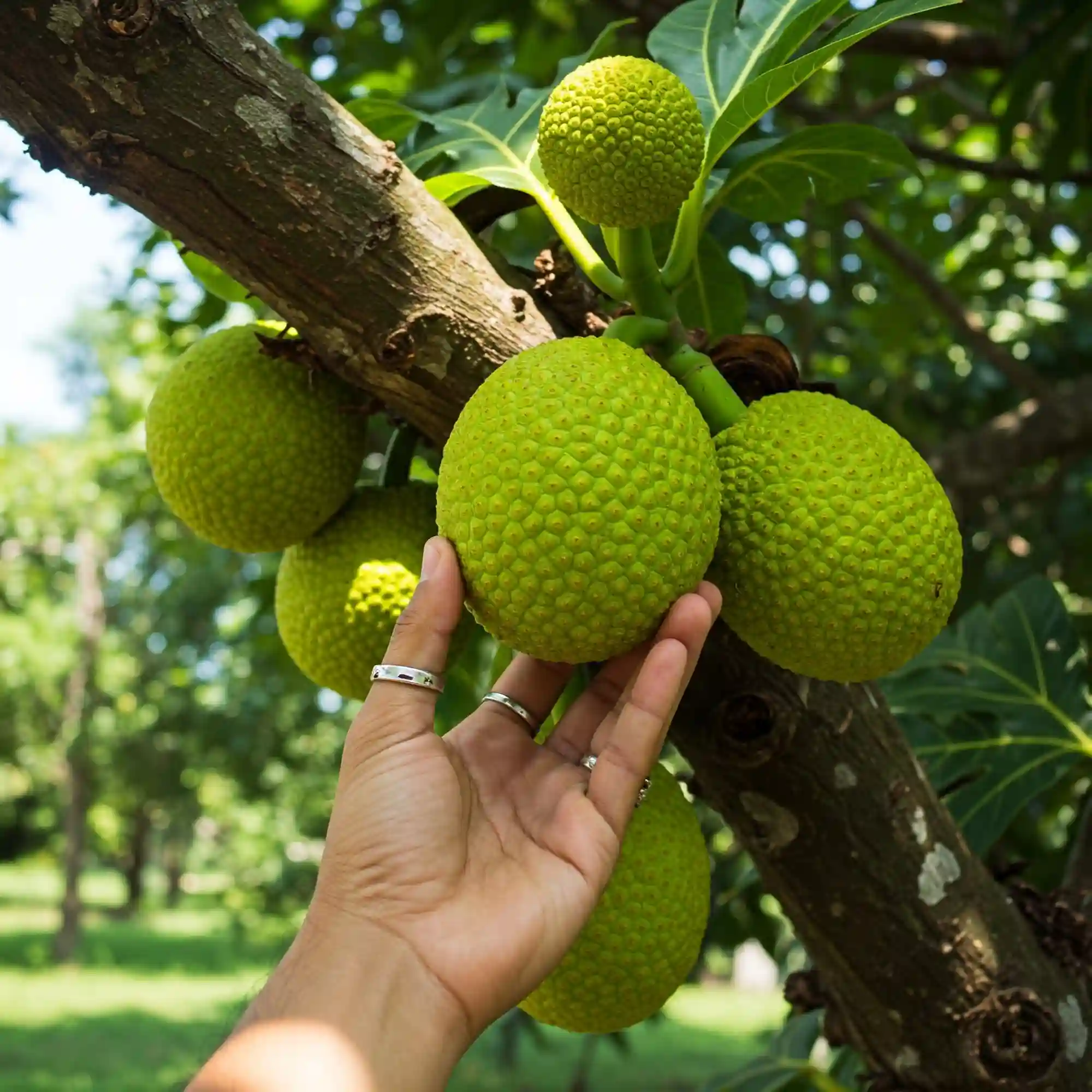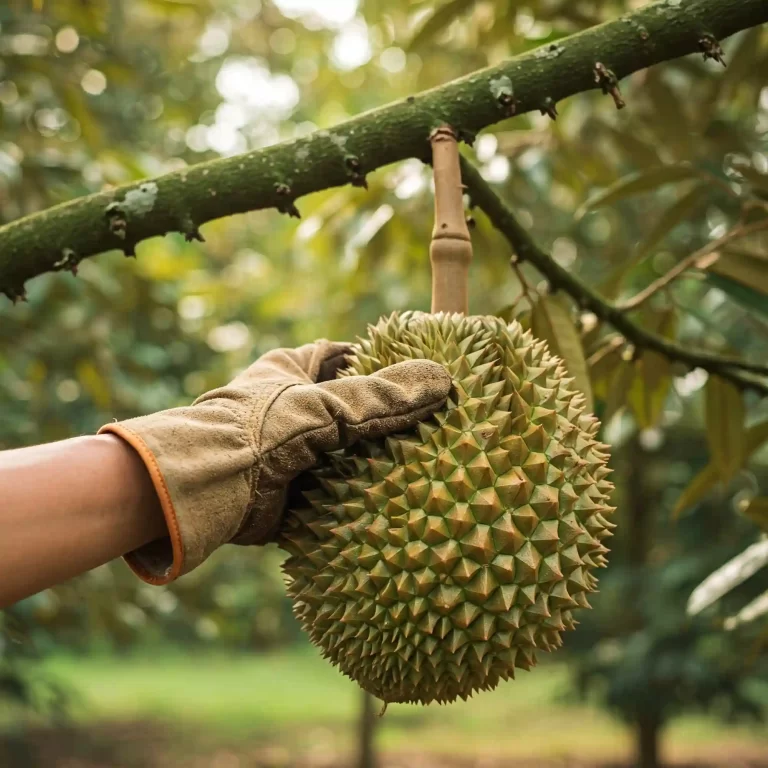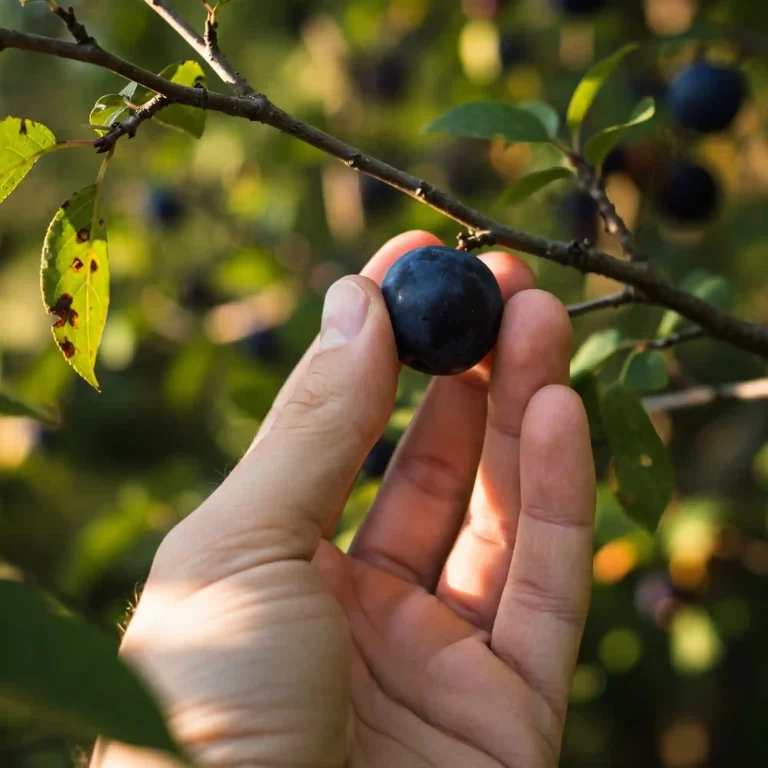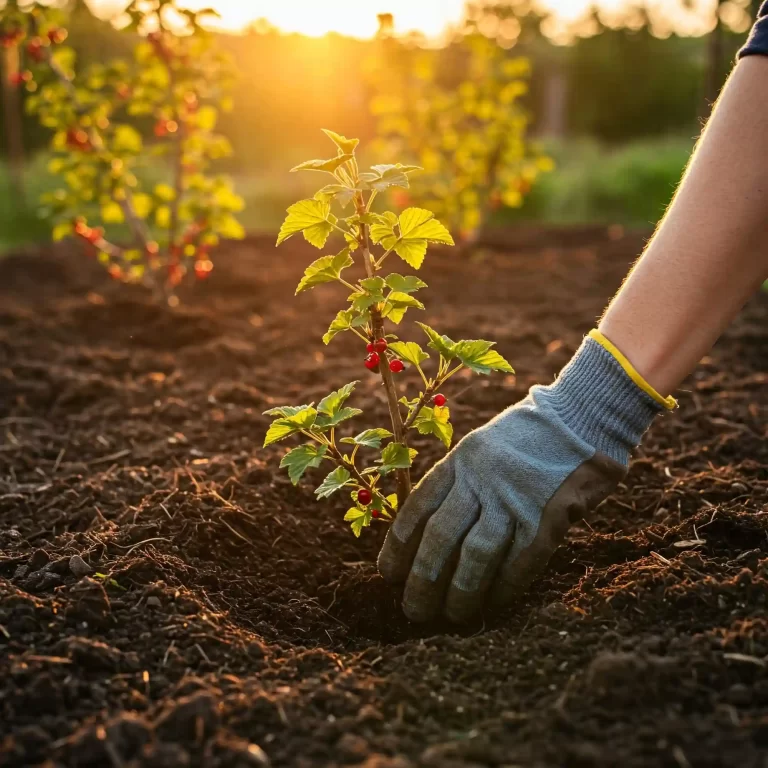Have you ever dreamt of harvesting your own sweet, starchy breadfruit right from your backyard? The idea is tantalizing, isn’t it? But, perhaps the thought of navigating the complexities of tropical fruit cultivation seems daunting. You might be wondering, “Is it even possible to grow breadfruit in my climate?” or “What are the secrets to ensuring a bountiful harvest?” The truth is, growing breadfruit can be a rewarding experience, and with the right knowledge and techniques, you can enjoy this tropical delight right at home. I’ve spent years cultivating these trees, and I’m here to guide you through every step, ensuring your breadfruit journey is fruitful and enjoyable.
Understanding Breadfruit Trees: A Tropical Gem
Breadfruit, scientifically known as Artocarpus altilis, is a true marvel of the tropics. Its origins trace back to the lush islands of the Pacific and Southeast Asia, where it has served as a staple food for centuries. You might be surprised to learn that breadfruit isn’t just a single entity; it encompasses a variety of cultivars, each with unique characteristics. From the common, seed-bearing varieties to the sought-after seedless types, like the ‘Ma’afala’ and ‘Puou’, the diversity is astounding. You must consider that the breadfruit tree thrives in warm, humid climates, mirroring its tropical origins. You need to ensure the average temperature stays above 60°F (15°C) for optimal growth.
The soil you choose is crucial. I’ve found that breadfruit trees flourish in well-draining, fertile soils. Loamy or sandy soils, enriched with organic matter, provide the perfect foundation. You must ensure the pH level of the soil is slightly acidic to neutral, ideally between 6.0 and 7.5. Sunlight is another critical factor. These trees demand full sun, requiring at least six to eight hours of direct sunlight daily. You should also note that consistent watering is essential, especially during the tree’s early stages and during dry periods. You need to avoid waterlogging, as it can lead to root rot, a common issue in breadfruit trees.
Key Breadfruit Tree Varieties
| Variety | Characteristics | Best Growing Regions |
| Common Seeded | Produces seeds, versatile use | Tropical regions, well-draining soil |
| Seedless ‘Ma’afala’ | Sweet, seedless flesh, highly prized | Pacific Islands, warm climates |
| Seedless ‘Puou’ | Larger fruit, excellent flavor | Southeast Asia, humid conditions |
| Dwarf Varieties | Compact growth, suitable for smaller gardens | Container growing, limited space |
The breadfruit tree, Artocarpus altilis, is a large, spreading tree that can reach heights of 60 to 80 feet in its natural habitat. The leaves are large, deeply lobed, and a vibrant green, adding a lush, tropical feel to any garden. The flowers are small and inconspicuous, but the fruit is the star of the show. The mature fruit is large, oval to round, and has a rough, green rind that turns yellowish-brown when ripe. The flesh is creamy white, starchy, and has a slightly sweet flavor.
Case Study: Breadfruit in Hawaii
In Hawaii, breadfruit, or ‘ulu’ as it’s locally known, holds immense cultural and nutritional significance. A study by the University of Hawaii revealed that breadfruit trees can yield up to 200 fruits per year, providing a sustainable and nutritious food source. The study also highlighted the importance of traditional cultivation practices, such as intercropping with other native plants, in maintaining soil health and biodiversity.
Quotes from Experts
- “Breadfruit is a climate-resilient crop that can play a crucial role in food security in tropical regions,” says Dr. Diane Ragone, Director of the Breadfruit Institute.
- “Growing breadfruit is not just about harvesting fruit; it’s about nurturing a tree that provides sustenance and shade,” adds renowned horticulturist, Alan Titchenal.
I have found that understanding the nuances of breadfruit tree care is essential for success. You must be patient and attentive to the tree’s needs, and you’ll be rewarded with a bountiful harvest. You should also know that these trees are more than just a source of food; they are a symbol of tropical abundance and a testament to the resilience of nature.
How to Obtain Breadfruit Trees: Starting Your Journey
Embarking on your breadfruit growing journey begins with acquiring a healthy tree. There are several methods to obtain a breadfruit tree, each with its own set of considerations.
Sourcing Seeds or Seedlings from Reputable Nurseries
One of the most convenient methods is to purchase seeds or seedlings from a reputable nursery specializing in tropical fruit trees. This approach offers several advantages. Firstly, you can choose from a variety of cultivars, each with its unique characteristics and suitability for your specific climate. Reputable nurseries often provide information on the origin and growth habits of their plants, ensuring you make an informed decision. Additionally, purchasing from a nursery ensures you receive healthy plants that have been properly propagated and cared for.
When sourcing seeds, it’s crucial to choose high-quality seeds from a reliable supplier. Look for seeds that are fresh, plump, and free from any signs of damage or disease. Germination rates can vary depending on the seed variety and storage conditions, so it’s advisable to start with a larger number of seeds to ensure successful establishment.
Propagating Breadfruit Trees from Cuttings
For those with a bit more experience, propagating breadfruit trees from cuttings can be a rewarding endeavor. This method allows you to obtain genetically identical plants from a parent tree with desirable traits.
- Select a healthy branch: Choose a young, vigorous branch from a mature breadfruit tree. The branch should be about 12-18 inches long and have a few healthy leaves.
- Prepare the cutting: Strip the leaves from the lower half of the branch and dip the cut end in rooting hormone powder.
- Plant the cutting: Insert the cutting into a well-draining potting mix and keep it moist but not waterlogged.
- Provide optimal conditions: Maintain high humidity and warm temperatures to encourage root development.
Propagation from cuttings can take several weeks or even months, so patience is key. Once the cutting has rooted, you can gradually acclimate it to outdoor conditions before transplanting it into the ground.
Considerations for Choosing the Right Variety
Selecting the right breadfruit variety for your location is crucial for success. Consider factors such as:
- Climate: Choose varieties that are well-suited to your local climate and can withstand potential temperature fluctuations.
- Space: If you have limited space, dwarf varieties or those with a more compact growth habit may be more suitable.
- Fruiting characteristics: Consider the size, shape, and flavor of the fruit, as well as the tree’s fruiting season.
- Seedless vs. Seeded: If you prefer seedless breadfruit, choose varieties like ‘Ma’afala’ or ‘Puou.’
By carefully considering these factors and choosing your source wisely, you can ensure a strong foundation for your breadfruit growing journey.
Planting Your Breadfruit Tree: A Step-by-Step Guide
Planting your breadfruit tree is a significant milestone in your journey. Proper planting techniques ensure your tree establishes a strong root system, leading to vigorous growth and abundant fruit production. Here’s a step-by-step guide to get you started:
Preparing the Planting Site
Before planting, it’s essential to prepare the planting site to provide optimal growing conditions for your breadfruit tree. Start by selecting a location that receives ample sunlight, ideally six to eight hours of direct sunlight per day. Avoid areas with heavy shade, as it can hinder growth and reduce fruit production.
Soil preparation is equally crucial. Breadfruit trees thrive in well-draining, fertile soil. If your soil is heavy clay, consider amending it with organic matter such as compost or well-rotted manure to improve drainage and aeration. You can also incorporate perlite or vermiculite to enhance soil structure. Aim for a slightly acidic to neutral soil pH, between 6.0 and 7.5.
Planting Depth and Spacing
Plant your breadfruit tree at the appropriate depth. The root ball should be level with the surrounding soil surface. Avoid planting too deep, as this can lead to root rot. If you’re planting multiple trees, maintain adequate spacing between them to allow for proper air circulation and root development. A spacing of 20 to 30 feet between trees is generally recommended.
Supporting Young Trees
Young breadfruit trees can be susceptible to wind damage, especially in exposed locations. To provide support and stability, consider using stakes or guy wires. Drive sturdy stakes into the ground near the tree and tie the trunk loosely to the stakes using soft materials like cloth or old stockings to avoid damaging the bark. As the tree matures and strengthens, you can gradually remove the support.
Planting Tips
- Consider the microclimate: Observe the planting site throughout the day to assess wind exposure, sunlight availability, and potential drainage issues.
- Prepare the planting hole: Dig a hole that is slightly larger than the root ball of the tree. Amend the soil in the hole with compost or other organic matter.
- Water thoroughly: After planting, water the tree deeply to settle the soil around the roots.
- Mulch around the base: Apply a layer of organic mulch, such as wood chips or shredded leaves, around the base of the tree to conserve moisture and suppress weeds.
By following these steps and paying attention to the specific needs of your breadfruit tree, you can establish a strong foundation for healthy growth and a bountiful harvest.
Caring for Your Breadfruit Tree: Essential Tips
Providing consistent care to your breadfruit tree is vital for its health, vigor, and fruit production. This involves a combination of proper watering, fertilization, and pruning techniques.
Watering Practices
Young breadfruit trees require regular watering to establish a strong root system. Water deeply and thoroughly, ensuring the soil is evenly moistened but not waterlogged. As the tree matures, it can withstand short periods of drought, but consistent moisture is still essential, especially during dry spells.
The frequency of watering will depend on factors such as soil type, climate, and rainfall. You should monitor the soil moisture regularly. If the top few inches of soil feel dry, it’s time to water. During the dry season, you may need to water more frequently.
Fertilizing Your Breadfruit Tree
Fertilizing your breadfruit tree provides the necessary nutrients for healthy growth and fruit production. Use a balanced fertilizer formulated for fruit trees, such as a 10-10-10 or 12-4-8 ratio. Apply fertilizer around the base of the tree, avoiding direct contact with the trunk.
The frequency and amount of fertilizer will depend on the age and size of the tree. Young trees require more frequent fertilization than mature trees. You can also incorporate organic matter such as compost or well-rotted manure into the soil around the base of the tree to provide slow-release nutrients.
Pruning Techniques
Pruning is an essential practice for maintaining the health and shape of your breadfruit tree. It helps to remove dead or diseased branches, improve air circulation, and encourage vigorous growth.
- Early Pruning: When the tree is young, prune to establish a strong central leader and remove any weak or crossing branches.
- Maintenance Pruning: Regularly remove any dead, diseased, or crossing branches to maintain the tree’s shape and promote healthy growth.
- Fruiting Pruning: After the tree begins to bear fruit, you can prune to remove excessive fruit to improve the size and quality of the remaining fruits.
Always use clean and sharp pruning shears to avoid damaging the tree. Pruning should be done during the dormant season, typically in the late winter or early spring.
By following these essential care practices, you can ensure your breadfruit tree thrives and provides you with a bountiful harvest of delicious fruit.
Protecting Your Breadfruit Tree from Pests and Diseases
While breadfruit trees are generally resilient, they can be susceptible to certain pests and diseases. Regular monitoring and timely intervention are crucial to maintaining the health and vitality of your tree.
Common Pests
- Mealybugs: These sap-sucking insects can infest leaves and branches, causing stunted growth and leaf drop. You can control mealybugs by manually removing them with a cotton swab dipped in alcohol or by using insecticidal soap.
- Scale Insects: These small, armored insects attach themselves to the branches and leaves, hindering the tree’s ability to photosynthesize. Horticultural oil sprays can be effective in controlling scale insects.
- Fruit Flies: Fruit flies can infest ripening breadfruit, causing damage and premature fruit drop. Covering the fruit with netting or using fruit fly traps can help protect your harvest.
Common Diseases
- Root Rot: This fungal disease can occur in poorly drained soils, leading to root decay and eventual tree death. Ensure proper drainage and avoid overwatering to prevent root rot.
- Fungal Leaf Diseases: Various fungal diseases can affect breadfruit leaves, causing spots, blotches, or leaf drop. Fungicides can be used to control fungal diseases, but prevention through good sanitation and proper watering practices is key.
Pest and Disease Control Options
- Organic Control Methods: Encourage beneficial insects like ladybugs and lacewings, which prey on mealybugs and other pests. Neem oil and insecticidal soap are effective organic options for controlling pests.
- Chemical Control Methods: In severe cases, chemical pesticides may be necessary. Always choose pesticides that are safe for use on edible crops and follow the instructions on the label carefully.
Prevention is Key
The best defense against pests and diseases is prevention. Maintain good sanitation practices in your garden, remove any fallen leaves or debris, and water your tree properly to avoid creating conditions that favor disease development. Regular monitoring of your tree will allow you to identify and address any problems early on, minimizing the impact on your harvest.
By implementing these preventive measures and taking prompt action when necessary, you can protect your breadfruit tree from pests and diseases, ensuring its long-term health and productivity.
Harvesting and Enjoying Your Breadfruit
The culmination of your breadfruit growing journey is the rewarding experience of harvesting and enjoying the fruits of your labor. Knowing when to harvest and how to handle the fruit will ensure you get the most out of your harvest.
Signs of Ripeness
Determining when a breadfruit is ripe can be a bit tricky. Here are some key indicators:
- Color Change: As the fruit matures, the skin will gradually change color from green to yellow or brown.
- Fruit Firmness: Ripe breadfruit will feel slightly soft to the touch, but not mushy.
- Sound: Gently tapping the fruit should produce a hollow sound.
Harvesting Methods
- Use a sturdy pole: For higher branches, use a sturdy pole with a hook or basket attached to reach the fruit.
- Avoid damaging the tree: Be careful not to damage the branches or the tree trunk when harvesting.
- Harvest with gloves: The sap from the breadfruit can be sticky and irritating, so it’s advisable to wear gloves when harvesting.
Storing and Preserving Harvested Breadfruit
- Fresh Storage: Ripe breadfruit can be stored at room temperature for a few days.
- Refrigeration: To extend the shelf life, store ripe breadfruit in the refrigerator for up to a week.
- Freezing: Breadfruit can be frozen for later use. Cut the fruit into chunks, blanch it in boiling water, and then freeze in airtight containers.
- Cooking and Preserving: Breadfruit can be cooked in various ways, including baking, roasting, frying, and steaming. It can also be preserved by making chips, flour, or jams.
Enjoying the Bounty
Breadfruit is a versatile and nutritious food that can be enjoyed in many ways. It can be used as a substitute for potatoes, bread, or even meat. Here are a few ideas to inspire you:
- Baked Breadfruit: Bake breadfruit in the oven until tender and serve with your favorite toppings, such as butter, cheese, or herbs.
- Mashed Breadfruit: Mash cooked breadfruit and season with salt, pepper, and other spices to create a delicious side dish or substitute for mashed potatoes.
- Breadfruit Chips: Slice breadfruit into thin chips, bake or fry until crispy, and enjoy as a healthy snack.
- Breadfruit Flour: Grind dried breadfruit into flour and use it to bake bread, cakes, and other baked goods.
By following these tips, you can harvest and enjoy the fruits of your labor and savor the deliciousness of homegrown breadfruit.
Troubleshooting Common Breadfruit Growing Challenges
While growing breadfruit is generally rewarding, you might encounter challenges along the way. Here are some common issues you might face and how to address them:
Slow Growth or Stunted Development:
- Nutrient Deficiencies: If your breadfruit tree exhibits slow growth or stunted development, it might be experiencing nutrient deficiencies. Soil testing can help identify nutrient deficiencies, which can then be corrected through fertilization.
- Poor Drainage: Waterlogged soil can suffocate the roots, leading to stunted growth. Ensure proper drainage by amending heavy clay soils with organic matter and avoiding overwatering.
- Pest and Disease Pressure: Infestation by pests or diseases can significantly impact the tree’s growth. Regularly monitor your tree for signs of pests and diseases and take appropriate control measures.
Addressing Nutrient Deficiencies and Correcting Soil Imbalances:
- Soil Testing: Conducting a soil test can provide valuable information about your soil’s nutrient composition and pH levels.
- Fertilization: Based on the soil test results, you can apply appropriate fertilizers to correct nutrient deficiencies. Organic fertilizers, such as compost and manure, can provide slow-release nutrients and improve soil health.
- Soil Amendments: If your soil is too acidic, you can raise the pH by applying lime. For excessively alkaline soils, you can add sulfur to lower the pH.
Resolving Issues with Excessive or Insufficient Sunlight:
- Excessive Sunlight: While breadfruit trees require ample sunlight, excessive exposure can lead to stress and leaf scorch. In hot climates, consider providing some afternoon shade, especially for young trees.
- Insufficient Sunlight: If your tree is not receiving enough sunlight, it may exhibit weak growth and reduced fruit production. If possible, relocate the tree to a sunnier location or prune surrounding trees to increase sunlight exposure.
By proactively addressing these potential challenges and providing your breadfruit tree with the care it needs, you can overcome obstacles and enjoy a successful harvest.
FAQs:
Here are some frequently asked questions about growing breadfruit trees:
Q: What are the best soil conditions for growing breadfruit trees?
A: Breadfruit trees thrive in well-drained, fertile soils with a slightly acidic to neutral pH (6.0-7.5). Loamy or sandy soils enriched with organic matter are ideal. Avoid heavy clay soils that can retain too much moisture and lead to root rot.
Q: How long does it take for a breadfruit tree to produce fruit?
A: The time it takes for a breadfruit tree to start fruiting varies depending on the variety, growing conditions, and propagation method. Generally, it can take anywhere from three to seven years for a tree to begin producing fruit.
Q: Can I grow breadfruit trees in containers?
A: Yes, you can grow dwarf breadfruit varieties in large containers. However, container-grown trees will require more frequent watering and fertilization. Choose a large, well-draining container and use a high-quality potting mix.
Q: How do I know if my breadfruit is ripe?
A: Ripe breadfruit will exhibit several visual and tactile cues. The skin will gradually change color from green to yellow or brown. The fruit will feel slightly soft to the touch, but not mushy. Gently tapping the fruit should produce a hollow sound.
Q: What are some common mistakes to avoid when growing breadfruit?
A: Some common mistakes to avoid include:
- Planting in poorly drained soil
- Overwatering or underwatering
- Using low-quality planting material
- Neglecting pest and disease control
- Failing to provide adequate support for young trees
By being mindful of these common pitfalls and taking the necessary precautions, you can increase your chances of successfully growing healthy and productive breadfruit trees.
Conclusion
Growing breadfruit trees can be a rewarding and fulfilling endeavor. By understanding their unique requirements and providing the necessary care, you can cultivate these tropical gems in your own backyard. Remember to start with healthy trees, provide them with optimal growing conditions, and monitor them regularly for pests and diseases. By following the tips and insights shared in this guide, you can increase your chances of success and enjoy the fruits of your labor for years to come.
I encourage you to share your breadfruit growing experiences with others. Connect with fellow gardeners, join online forums, and participate in local gardening communities. By sharing knowledge and supporting each other, we can all learn and grow together.
Remember, patience and perseverance are key to successful breadfruit cultivation. Enjoy the journey, embrace the challenges, and savor the rewards of growing your own tropical bounty.
I hope this comprehensive guide has empowered you to embark on your own breadfruit growing adventure. Happy planting!




